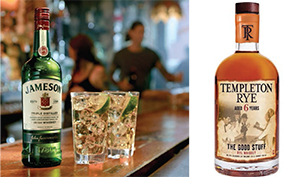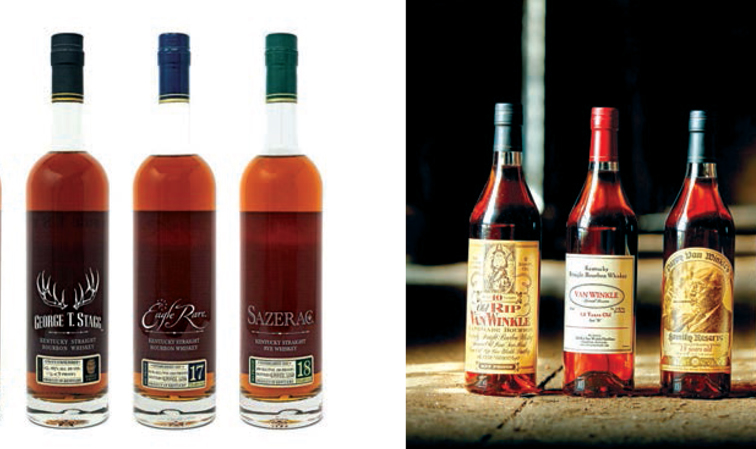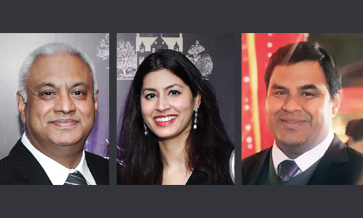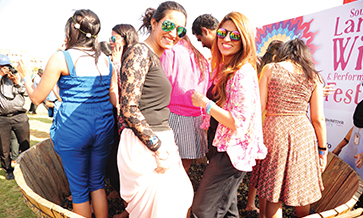The importance of the Indian whiskey market to the global wellbeing of the whiskey category cannot be overstated: nearly one in every two bottles of whiskey bought around the world is now sold in India; and seven of the top 10 global whiskey brands are Indian! India is still the sixth-biggest global destination for Scotch whisky, with the IWSR reporting 17% growth in 2018.
However, IWSR says 93% of all whiskey traded in India falls into the ‘value’ segment, with Scotch whiskies traditionally coming in a distant but important second place. That leaves plenty of scope to develop the high-end segments. This is where non-Scotch brands, which are already on the premium whisky firmament in our market, can step in to satisfy an ever-expanding Indian palate and tastes.
Scotch whisky is on a high in India, the 8th largest market for Scotch worldwide in value terms, clocking Euro 162 million (US$ 180.4 million) in 2018, which is a 34.1% rise from the previous year.
By volume too, India is the largest whiskey market in the world, with over 200 million 9-litre cases consumed in 2018. Out of this, Scotch accounts for barely 2%. But in the imported whiskey market, Scotch accounts for as much as 97% share.
Whiskies from other parts of the world have been making steady inroads into the market in India. Given the sheer size of the Indian spirits market and our consumer base this should come as no surprise. The underlying consumer trends are in support.
However, it is not just the imported whiskey market which is of interest to American or Irish whiskey makers; some brands are also eyeing other spirit/ beverage categories.
India has a large, young demographic, with a rapidly growing base of consumers joining the base of the legal drinking age (LDA) – as some statistics suggest, every year India adds the population of Australia to the LDA base!
This young consumer base is increasingly well travelled, with exposure to global culture, and has made good use of his/ her trips to seek out and discover new beverages and trends which they might not easily find back home.
Less, but better
As Kartik Mohindra, Chief Marketing Officer at Pernod Ricard India notes, “For most of their lifestyle choices, Indian consumers are increasingly seeing a counter to the mainstream. This applies to their whiskey choices too, where consumers are gradually showing an interest in alternative whiskey categories apart from Scotch.”
Drinks companies are riding this wave to broaden their whiskey portfolio. Experimentation is very much in vogue for the consumer. There is a growing set of consumers that is not just driven by the brand call, but is exploring brands within a category, in an attempt to further educate its palate, and see what taste might be more appealing.
And the right column of the restaurant/ bar menu (price) is not a deterrent in this quest, because this set of consumers is open to drinking less, but better.
American whiskey was the first off the block to lure the diverse Indian palate. Says Shatbhi Basu, who in the past has been American Whiskey Ambassador in India on behalf of the Distilled Spirits Council of the United States (Discus): “Don’t we just love all things American?! Seriously though, I think we like bold flavours.”
The Indian palate is used to both sweet and spice – “and American whiskey is a brilliant balance of both with the most amazing aroma. It also complements our food quite well, so works with the concept of starters with drinks,” she adds.
America’s share
It is American whiskey barrels which have the lion’s share of the millions of casks of Scotch whisky maturing in warehouses. A little bit of that vanilla sweetness of the Bourbon does transfer to the Scotch. American whisky also owes a debt to the Scotch in that some of the early practitioners were Scots.
In 1797, it was Scotsman James Anderson, George Washington’s estate manager, who proposed to the newly retired US President that he begin producing rye and corn whiskey. The Mount Vernon distillery started by George Washington has recently begun producing whiskey again – not, unfortunately, available for sale in India!
American whiskey itself can be classified as Bourbon, Tennessee or Rye whiskey. In Bourbon or Tennessee, a minimum of 51% corn is required, while in rye, it should have a minimum of 51% rye.
Jack Daniel’s has been the pioneering brand; and a lot of Jack’s early popularity in India was linked to its brand renown and an Indian fascination with Americana. Jack has realised the importance of training and educating the consumer and the bartender on the distinctive qualities of American whiskey, its history and lineage.
Jack Daniel’s is one of the few brands available the world over of Tennessee whiskey, George Dickel being the other notable example. Tennessee whiskey (as distinct from Bourbon) must be made in Tennessee and follow the Lincoln County process, wherein the spirit must undergo charcoal filtration prior to ageing.
Cocktail wave
Another trend in the Indian hospitality market has been the growing cocktail culture, led by leading edge bars. Whiskey cocktails – such as the Old Fashioned, Whisky Sour and the Manhattan – use American whiskey, be it Bourbon or rye.
American whiskey brands have again benefitted from this. They have further built on this with properties like the American Whiskey Legacy Cocktail Challenge from Brown Forman, in which the winning bartender is taken to the Jack Daniel’s and Woodford Reserve distilleries in the US.
Brown Forman has since expanded its repertoire in India with the launch of Gentleman Jack, Jack Daniel’s Single Barrel, and Jack Daniel’s Fire and Jack Daniel’s Honey, as also its Bourbon, the Woodford Reserve.
Santosh Kukreti, Bar Manager at the popular Thirsty City 127 in Mumbai says, “American whiskey is a bit sweet in taste due to the coconut and vanilla flavours from the barrel, and Indians have a sweet palate. At Thirsty City 127 we have a cocktail called Spice Trade with Indian spices (vanilla, cinnamon, nutmeg and star anise) that elevate the flavour profile of the cocktails. It’s very popular even with women.”
Siddharth Wadia, the new General Manager and Director of Brown Forman for India, Middle East and North Africa, corroborates Santosh’s observation. “A lot of women, who traditionally have shied away from whiskey, now find a suitable alternative in American whiskies, both in the form of cocktails and straight,” he says.
Recent price corrections by Brown Forman on their portfolio have also played a part – and although the company is not bottling any of its iconic brands in India at the moment, it is not ruled out in the future.
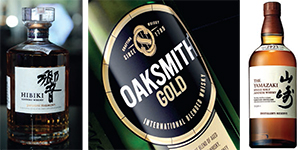
Made in India
The Indian spirits market has also attracted the attention of companies that are keen to get a foothold in India. Sazerac Company of the USA signalled its intent last year, by taking a 23% stake in Bengaluru-based John Distilleries, maker of the award-winning Paul John Single Malt.
Sazerac is a family owned company, with some amazing brands of American whiskies in their portfolio, including Buffalo Trace and Rip Van Winkle Bourbon and Sazerac rye.
Sazerac’s Fireball, a cinnamon-flavoured whiskey, has overtaken Jagermeister as a shot of preference, not only in the US but globally. Fireball is now being made locally, and after its recent launch in Bengaluru, it will be expanding to other markets in India.
John Distilleries feels that the sweeter taste profile of American whiskey, arising from a high proportion of corn in the mash, makes it more amenable to the Indian palate, and also encourages “mix-gender consumption”.
A representative for John Distilleries says that while Scotch represents the old world of “tradition”, American whiskies have a more “no-nonsense approach” and yet maintain product depth and complexity.
Singapore-based Anupam Dikhit, a keen American whiskey connoisseur and collector, believes: “We are living in the golden age of American whiskey. They are being voted the best in the world for the past few years by Jim Murray’s Whisky Bible. In 2019, the best and 3rd-best world whiskies were both from the Buffalo Trace collection.”
More Americans
The other flag-bearer of American whiskey is Beam Suntory, with iconic brands like Jim Beam and Maker’s Mark. Jim Beam White label has been available in India for a while; and an upgraded Jim Beam Black was launched recently.
Jim Beam too has chosen music as a path to the consumer with creation of properties like Jim Beam Originals to help promote local music talent. The Blend is its recently launched platform to engage with bartenders. The Highball strategy aims to position Jim Beam as the whiskey of choice to be consumed with a mixer.
Neeraj Kumar, Managing Director of Beam Suntory India says, “We see an excellent opportunity to build and strengthen our premium and luxury portfolio in India.” He feels that Indian consumers these days are more knowledgeable with regard to different types of whiskies, including Bourbon.
Other American whiskey brands like Templeton and Michter’s are also present in the Indian market through importers, giving the American whiskey category a lot of depth and width – definitely an asset for any category to grow.
Irish pioneers
If Scotch owes a debt to the Americans for barrel ageing, then the Scots’ debt to the Irish goes far deeper – it is commonly acknowledged that it was Irish whiskey which came first, with distilling knowledge then crossing borders into Scotland.
By the late 19th century there were more than 80 licensed distilleries in Ireland, but several factors – including prohibition in America, one of their biggest markets – led to a rapid decline in the Irish whiskey industry, leaving just a few distilleries standing.
Jameson (owned by Pernod Ricard) can be credited with the worldwide renaissance in Irish whiskey, making it one of the fastest growing categories in America for several years in a row. Jameson is also credited with grabbing market share from beer in the US.
Jameson has been since followed globally by other brands which have also grown in popularity, notably the Bushmills, Cooley’s and Tullamore Dew, and newer brands like Teeling and Roe and Co (from Diageo).
In India too, Jameson has singly led the resurgence of the Irish whiskey category. Most Irish whiskies, including Jameson, distinguish themselves from Scotch by their use of un-malted and malted barley, as well as triple distillation. Their smooth taste profiles make them quite palatable on the rocks or with a mixer.
Kartik of Pernod Ricard says, “These whiskies have managed to draw fans from across the country with the Irish personality they represent: social, unpretentious and down-to-earth.”
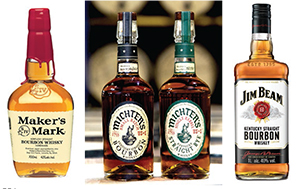
Japanese success
One category of world whisky – perhaps a victim of its own success! – has been late to the India market. The Japanese whiskey industry never anticipated the global accolades and explosion in demand, and was left short in terms of inventory.
Japanese whiskey brands like Yamazaki, Hakushu and Nikka have for long been winning top honours in major international competitions. Two significant milestones were Nikka’s Yoichi 10-YO being named the ‘Best of the Best’ by Whisky magazine in 2001. A full 14 years later, Jim Murray anointed the Yamazaki Sherry Cask 2013 as the ‘Best Whisky in the World’ in his 2015 Whisky Bible.
Japanese whiskey makers have only recently been ramping up production and warehousing capacities. Aged variants are, therefore, mostly restricted to larger markets like America, Europe and China, and of course the home market.
Non-aged variants have begun to be launched in India, such as Yamazaki Distiller Reserve single malt and Hibiki Harmony blended whisky, from Beam Suntory.
Shinji Fukuyo, Master Blender for Suntory says, “Single malt Japanese whiskies are generally on the super-premium end of the price spectrum. We are highly desired and in demand amongst the well-travelled consumer, who will make an effort to seek them out overseas.” (Read his interview on Pg 40).
Lesser known Japanese whiskey brands like Akashi White Oak, an easy-to-drink blend, are available in the Indian market. In an entrepreneurial move, Delhi-based Indospirit has also tied up with a facility in Japan to create a bespoke blend which it markets under the brand name, Enso.
One thing is for sure: although the dominance of Scotch in the Indian imported whiskey market is unlikely to fade away any time soon, there is enough space for whiskies from around the world to flourish. So don’t be surprised to see an award-winning Kavalan (Taiwan) or Cotswold’s (England) at your neighbourhood bar!
